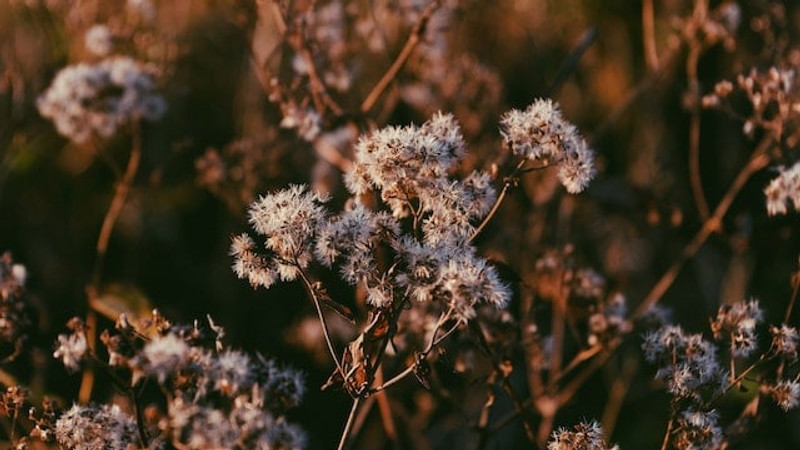
How Dead Plants Provide Life for Birds, Pollinators and People!
Published by Anne Altor on Sep 21st 2017
Do you cut your flowers back
when they're done blooming, or trim foliage to the ground once it starts to die back? (Of course if they're perennials, the plants are not actually dead—they are very much alive underground). The idea of a 'neat'-looking yard is understandable from a conventional suburban perspective, but all this neatness is not so good for nature! Our tendency to manicure green spaces deprives other beings of food and shelter they need to survive.
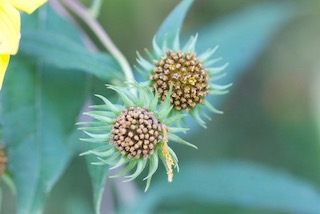
Sunflower seedheads starting to mature
Pruning has a place.
Deadheading (removing flowers after they've bloomed and before they've set seed) can stimulate some plants to produce more flowers (the plant wants offspring, afterall!). Sometimes you might want to thin your perennials or share them with friends and neighbors. And in highly managed systems that have lost some of Nature's checks and balances, removing diseased foliage can help prevent the spread of plant pathogens. Overall though, heavy management of flower beds and yards to meet an aesthetic of tidiness impoverishes natural systems and doesn't ultimately benefit humans either.
Insects, birds and mammals
that pollinate and disperse seeds have coevolved with plants and depend on them for food and shelter. Many butterflies and other insects overwinter as eggs, caterpillars, pupae or adults. Each life stage has different requirements; overwintering stages need the surfaces, cavities and insulation that dead plants and leaves provide.
Here are some tips
for creating a beneficial year-round backyard habitat (or front yard, of course!):
Allow plants to set seed, and leave seed heads in place. This will provide food for birds and enable your perennials to spread. Some birds also use seeds with downy attachments, like milkweed, thistle and cottonwood, as nesting material.
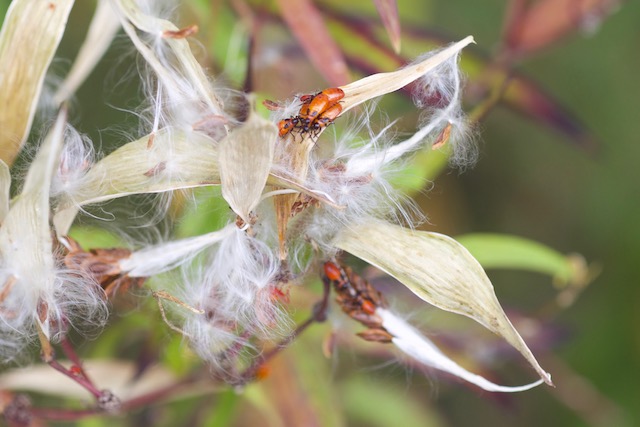
Milkweed going to seed, with milkweed bugs
Leave dead plants standing. The stems provide shelter and hiding spaces for birds, small mammals and insects. Some insects attach their chrysalis to dead plant stems. Others spend the winter inside hollow stems. If you need to trim back your perennials, it's best to wait until spring after birds have eaten the seeds and insects are done overwintering.
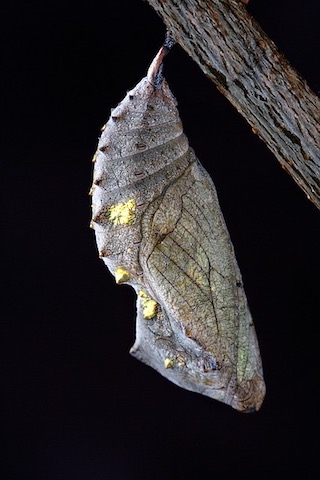
Butterfly chrysalis attached to twig.
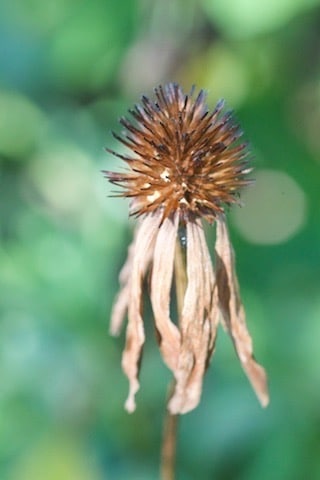
Echinacea seedhead.
Leave leaf litter on the ground. Leaf litter provides habitat for insects that ground-feeding birds feed on. It also helps create a healthy soil community by providing organic matter and insulation. Native plant gardeners at Mt. Cuba recommend mowing over leaves that fall on your yard and putting the chopped up leaf litter down in your flower beds as mulch – a great way to recycle leaves and save money on mulch!
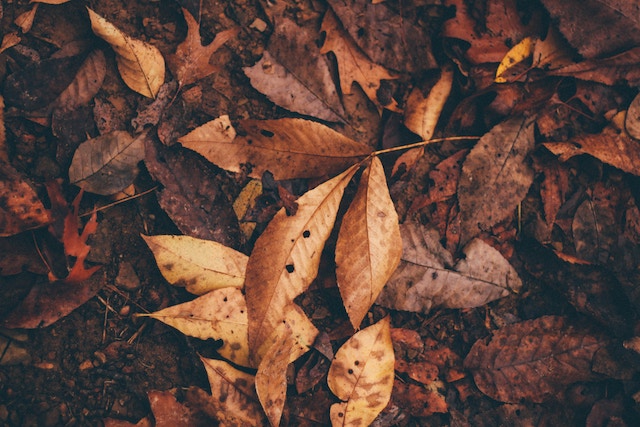
Leaf litter. Photo by Shelby Deeter on Unsplash
Leave small patches of bare soil. According to the Xerces Society Guide to Attracting Native Pollinators, around 70% of North American native bee species (~2,800 species) nest in small burrows in the ground, and about 1,200 species nest in tunnels in stumps and plant stems. Why care about bees? Native bees pollinate the majority of our fruit and vegetable crops, flowers, many fiber crops, and oilseed crops. They pollinate flowering plants including trees and shrubs, and thus are a critical part of ecosystems. The insects themselves are also an important part of the food web. Bare, unmulched areas should be located in well-drained soils that receive plenty of sun. You can build the soil up into a mound, or just leave it as it is, flat or sloped. Keep these areas free of dense vegetation, and avoid digging and raking into them.
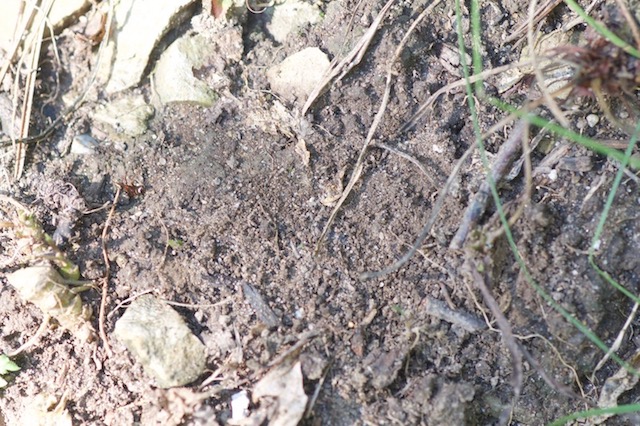
Patches of bare soil provide important habitat for ground-nesting bees and other pollinators.
Make a brush pile. As small branches and twigs accumulate in your yard, or as you thin out perennials in spring, pile them up in an out-of-the-way spot in your yard. Brush piles are used by all kinds of creatures, from insects to birds and mammals. We often have a Cooper's Hawk hunting by our brush pile.
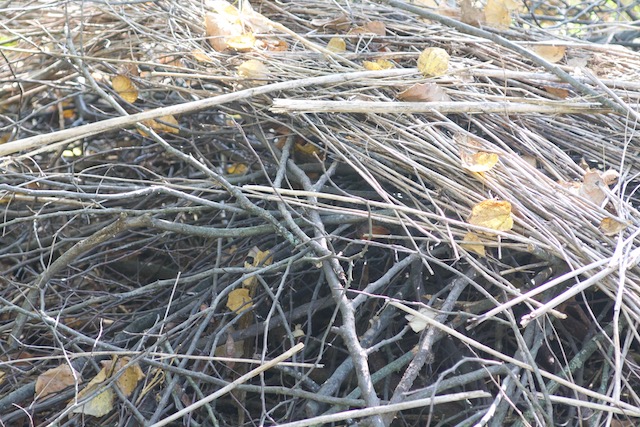
One of our backyard brush pile habitats.
Avoid using pesticides and herbicides. The widespread availability of pesticides and herbicides at garden shops and hardware stores could fool a person into thinking that these chemicals are safe to use around the yard. This is not the case. These products are destroying pollinator populations and are toxic to humans as well. While pesticides kill pollinators directly, herbicides such as Roundup (glyphosate) reduce the availability of flowers that provide them with nectar and pollen. A healthy garden with a diversity of plants and undisturbed soils can support a community of micro- and macroscopic life forms that keep pests in check. Weeding by hand is also a good way to soak up some time outside.
Enjoy the beauty of your all-season garden! Colorful leaves… snow-capped flower heads… dewey spiderwebs… birds in winter… If you take a little time to learn about and make room for the creatures that inhabit our shared spaces, in spring, the pollinators will be there to make sure your gardens once again come to life with flowers, birds and butterflies.
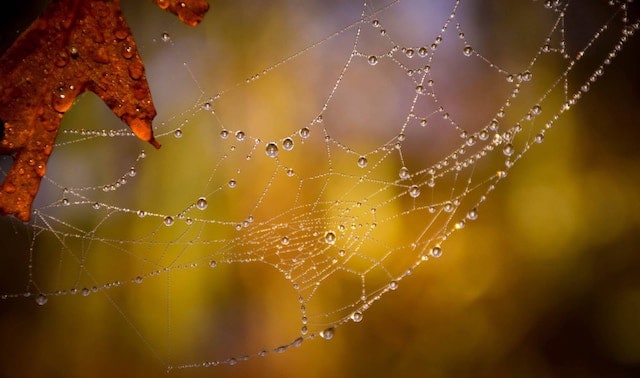
If you enjoyed this post, check out our other posts on Everyday Ecology!
